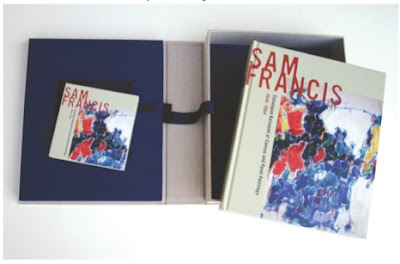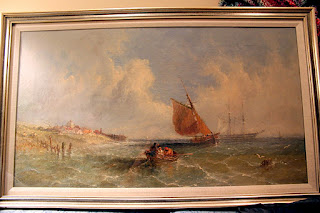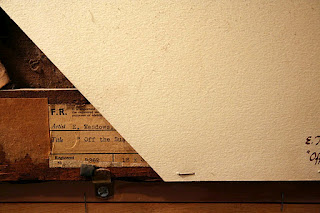In addition to appraisal services, Thompson & Martinez consults with collectors regarding the acquisition, management and sale of fine art works. Last month, Natasha Bonilla Eckholm spoke to the East County Chapter of the San Diego Museum of Art on art collecting in “A Primer for Aspiring Art Collectors in San Diego: Strategies, Value, Collection Care and More,” presented at the Grossmont Hospital Healthcare Auditorium. The lecture covered collecting strategies and resources, as well as collections care, insurance and legacy planning. Resources for San Diego Collectors
Category Archives: appraisal
Does Irreplaceable = Priceless?
The PropertyCasualty360.com, a website dedicated to reporting news on insurance issues, explains that just because a work may be “irreplaceable” it doesn’t mean it can’t be valued. Read on below.
“Ripped from the headlines – a wealthy art collector reports an original Picasso painting stolen. The FBI initiates a search for the criminals, the press speculates on who might have stolen such a high-valued work, and the insurance company has the difficult task of reimbursing their insured for lost value.
Fine art appraisers specializing in insurance claims are sometimes called upon to help establish value for those items that are often referred to as “priceless.” The logical question then becomes, “How do you value irreplaceable, ‘priceless’ works of art?”
The answer is simple in theory and difficult in practice; while most works of art are in fact irreplaceable, almost everything has a value. For appraisers, that value is most often determined by comparing like kind and quality items that are for sale or have recently sold in the market.
To elaborate, let’s take the example of the stolen Picasso discussed here. While these paintings are definitely irreplaceable, they are not necessarily “priceless.” Because Picasso’s paintings and paintings by other high-caliber artists are often traded in the auction market at Sotheby’s and Christie’s, prices for these paintings are established semi-frequently in the market and become a basis of value for these particular artists’ work.
To value the Picasso, we would compare the insured’s painting to other Picasso paintings which have sold at auction. To complete this task we would consider the year of creation, canvas size, subject matter, medium, style of painting, and other determining factors which would affect value. We would not directly compare a Picasso Cubist abstract to a Picasso Blue Period portrait for a value. Instead, we would compare like kind and quality works as well as how the market is currently responding to Picasso paintings in general. When Picasso’s Nude, Green Leaves, and Bust Cubist painting broke an auction record in 2010 for $106.5 million, it set the standard of value for other Picasso Cubist still life paintings.
This scenario holds true with other seemingly priceless paintings by masters such as Van Gogh, Monet, and the like. As long as there is an auction market for an artist’s work, a price can be established. It is often the case that private dealers and realized auction prices are very similar. This is particularly true of higher end art.
However, a work that has come up at auction over and over again and has been seen frequently by the public may be considered “stale” and not as valuable in the short-term as a work that has rarely been seen. For this reason, it is also important to have an awareness of the recent visibility of both the subject property piece and the works to which it is being compared.
Appraising high-end art is challenging, especially in the event of a loss and damage insurance claim. If the piece was damaged, an adjuster will often ask for help to secure restoration estimates and compare those to the replacement value. If the cost of restoration plus the cost of the estimated diminution of value is less than the replacement cost, an item will be recommended for restoration.
When collector Steve Wynn (the billionaire Las Vegas hotelier) accidently elbowed his Picasso, leaving a silver dollar-sized hole in the canvas before trying to sell it, his insurance company was notified immediately. Most likely, if the painting was scheduled on Wynn’s insurance policy, they footed the restoration bill, raising the question as to whether the damage and subsequent restoration affected the value of the painting. The answer is yes, there would be a diminution in value to the piece in comparison with other Picasso paintings that have not been restored.
Whether or not a piece has been restored in the past is something appraisers need to take into consideration; the condition of these paintings plays a major role in determining value.
Along with condition, provenance also plays a major role in the valuation. Provenance is the successive history of ownership of a work of art and it is one of the factors that helps establish the authenticity of a piece. If an important work of art does not have a paper trail it can be a red flag.
While appraisers are not authenticators, there are a number of things they look for to complete due diligence and help establish value. Most major artists have a catalog raisonné to reference. A catalogue raisonné (French meaning “reasoned catalog”) is a comprehensive list of artworks by an artist, describing the works so that they may be reliably identified by third parties.
Appraisers reference the artist’s catalogue raisonné in search of the painting being appraised to make certain it is listed. Also, the owners of the painting, if authentic, would most certainly have purchase documentation, auction house records, previous insurance appraisals, and/or insurance schedules to accompany their piece. In the event the authentication of the piece is questionable, there are experts to call on for assistance. The estate of the artist or the artist’s foundation can assist with recommending authenticators of their work.
For insureds who are art collectors, it is advisable to have them schedule their fine art separately on their insurance policy with an accompanying certified appraisal. This appraisal should be updated every two to four years, since many changes in the market can occur in this time period affecting the value of the artwork: the death of the artist, a record-breaking auction sale for the artist, and an increase in the art market in general are all factors that can increase value.
When dealing with irreplaceable, “priceless” works of art in an insurance claim, a certified appraiser qualified in the realm of fine art can provide invaluable counsel.”
Source: PropertyCasualty360.com
Authentication and the Art Market
Art fraud is a multi-billion dollar industry in the United States. Consequently, authenticity, the degree to which an art work can be said to have been indisputably created by an artist, is a key aspect of value and of vital interest to both appraisers and collectors.
At a recent seminar in Los Angeles, attorney Christine Steiner of Sheppard Mulllin and Debra Burchett-Lere, Director of the Sam Francis Foundation, reported on the evolving legal ramifications for authenticating artwork. In recent years, a number of high profile court cases have addressed the liability of sellers, buyers, auction houses, independent experts and artist’s foundations when it comes to authenticating works of art. These cases illustrate the challenges of authenticating works of art which have included disagreements among recognized experts, the sophistication of art forgery techniques, as well as differing authentication standards in the United States and other countries. Other complicating factors in determining the authenticity is the absence of catalogue raisonnés and other comprehensive documentation on an artist’s works.

Sam Francis: Catalogue Raisonné of Canvas and Panel Paintings, 1946–1994
Edited by Debra Burchett-Lere with featured essay by William C. Agee
(Photo courtesy the Sam Francis Foundation, California)
Because of the increasingly litigious environment in the art world, and the high costs of defending opinions of authenticity, it is becoming more difficult to get artist’s foundations, authentication boards and independent experts to render opinions. One high-profile example is the Andy Warhol Foundation which recently announced that it is disbanding its authentication board. Other artist’s foundations are reviewing their liability in the event of disputes over the authenticity of specific works. These cases are impacting the creation of catalogue raisonnés, the authoritative catalogues that document an artist’s production of works over a lifetime. Consequently, provenance, the history of ownership of an artwork, is more important than ever as an element of authenticity.
The American Society of Appraisers states that appraisers witness, identify and value, but do not authenticate. However, appraisers frequently must take into consideration the authenticity of artworks as part of the appraisal process. This is done through the careful physical inspection of the artwork, consultation with experts or the artists themselves, research of published material such as catalogue raisonnés, and in some cases, scientific testing. It is often necessary for appraisers to examine works outside the frame in order to look for key markers of attribution including signatures, watermarks, edition number, and titles. Discrepancies between the art work and documentation on the artist and their known works that raise questions about the authenticity of a given work must be discussed in the appraisal report.
What should collectors do?
Purchase art from reputable sources and request warranties of authenticity. A warranty, as opposed to a certificate, should offer the buyer protection and recourse if the work is discovered not to be authentic at a later date.
When purchasing a work of art seek information on the provenance, the prior history of ownership of the work.
Maintain all documents relating to the acquisition of a work of art, such as sales receipts, as well as provenance.
If a work of art is reframed retain all information that may be affixed to the prior frame or enclosure such as gallery stamps and stickers, written notes, custom’s stamps, etc…
If you own a work by an artist who is represented by a foundation, it may be beneficial to inquire if the work can be registered, particularly if the foundation is documenting the artist’s work in a single or multiple catalogue raisonnés. The Sam Francis Foundation, for example, offers the owners of Francis works the opportunity to register the work and to obtain a Documentation Data Sheet with information on the creation and history of the work.
For additional information go to http://www.samfrancisfoundation.com
What’s My Art Worth, Part 2 – Auction House Estimates
In a follow-up to the recent post, “What’s My Art Worth” I think it would be helpful to explain the difference between estimates provided by auction houses and those provided by independent, professional appraisers.
Let’s say you have a landscape painting by a California painter from the 1930s and you want to know what it might bring at auction. You do a little research online and discover that Bonhams & Butterfields has annual auctions in San Francisco for California painting. You go to their website and submit a digital photograph of your painting, its dimensions, where you acquired the piece etc… After a couple of weeks you hear back from them and they are interested in handling the painting in an upcoming auction. They provide an estimate of $3,000-$5,000. It’s important to understand that these estimates are not simply a range of what like paintings have sold for at auction in recent years. Rather these estimates also take into account prospective buyers and what will draw them into bidding on the property. So typically, the estimate will be set low in the hopes that it will attract bidders looking for a bargain. The hoped for scenario is that this will encourage competitive bidding, driving up the price beyond the high end of the estimate.
An independent appraiser compliant with the ethics and standards of USPAP (Uniform Standards of Professional Appraisal Practice) approaches the project from a more objective standpoint. Marketing considerations have no bearing on our analysis. Moreover our fee is set at an hourly or per project rate rather than to the percentage of the appraised value which would obviously lead to inflated valuations. Rather the value conclusion of the painting is derived from an analysis of realized sales of similar properties at a variety of auction houses. Moreover, the appraiser interprets the nuances of the sale to determine why one painting may have sold for significantly more than another similar painting, or why it sold for twice times the estimate, who the bidders were, the history of ownership of the painting etc… The appraiser can also advise you on which auction house would be the best venue for selling your work by evaluating how often artworks by the artist are sold through their showrooms, how successful they have been in realizing realizing high prices relative to other auction houses etc..
For more on professional appraisal practice see the “Art of the Appraisal” in a recent NYTimes article.
http://www.nytimes.com/2011/10/19/business/choosing-experts-to-appraise-collectibles-and-valuables.html
What’s My Art Worth?
In a sign of the times, one of the most frequent queries that we get these days goes something like this: “I was given (inherited, won) a print or painting, sculpture by “John Smith” (or, I don’t know who the artist is but it looks really old) and am curious about what it is worth because I’d like to sell it. Can you help me?”
Before we can answer that question, there is some key information that we need in order to determine if we can help you or, if you have something that is worth an appraiser’s standard fee of upwards of $150 an hour.
Is it original?
By original we mean, is it a unique oil/acrylic/watercolor/drawing or sculpture that is signed by an artist? If you are not sure and if it is in a frame, examine it out of the frame.
Who is the artist?
Look for a signature on the front or the back of the painting, or, if it is a sculpture, on the base. Another reason to take a print or painting out of the frame is that there may be a gallery label on the back identifying the artist, title, date and even price.
What are the dimensions?
Height and width of a two-dimensional work, height, width and depth if a three-dimensional work.
What is the history of ownership?
Where did you or the person from whom you received the artwork acquire the piece? If you don’t know, look for any old appraisals, invoices or certificates.
What is the condition?
The condition of the artwork usually has a significant impact on value. Look for rips, holes, insect infestation, fading, toning, water damage etc… Again, this is another reason to remove an artwork from the frame. Oftentimes artwork that has been in the family for decades has never been reframed, consequently the piece has become degraded due to over-exposure to light, or from non-archival acidic backings.
Do a quick google search with the artist’s name to see if he or she pops up. Or go to one of the fine art databases to see if your artist has enough of a market to be included.
Finally, it is important to understand that the value of an artwork varies according to the purpose of the appraisal. The value assigned to a work for insurance purposes is Replacement Value, typically what you would pay at a gallery. The value assigned to an artwork for donation, estate tax or sales purposes, is known as Fair Market Value, defined by professional appraisal organizations as what a willing buyer and a willing seller would agree is a reasonable price in the open marketplace, usually the auction market.



